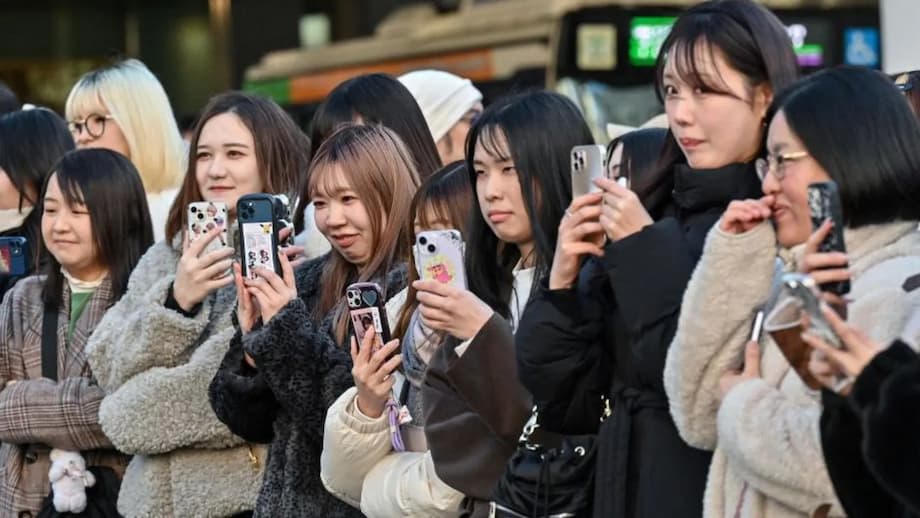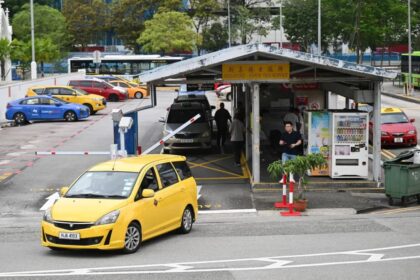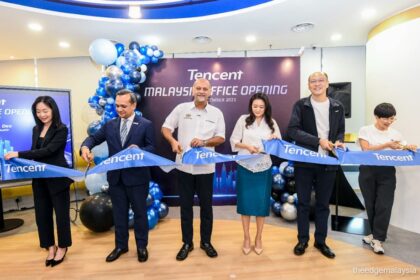Japanese Town Proposes Two-Hour Daily Smartphone Limit for All Residents
In a move that has ignited national debate and drawn international attention, the city of Toyoake in central Japan has proposed an ordinance urging all of its 69,000 residents to limit their daily smartphone use to just two hours outside of work and study. The non-binding proposal, submitted by the Toyoake municipal government in Aichi Prefecture, is believed to be the first of its kind in Japan to target an entire population, regardless of age. While the measure is not legally enforceable and carries no penalties, it has sparked intense discussion about digital addiction, personal freedom, and the role of local government in shaping lifestyle habits.
- Japanese Town Proposes Two-Hour Daily Smartphone Limit for All Residents
- What Is the Toyoake Smartphone Ordinance?
- How Will the Limit Work? Details and Exemptions
- Public Reaction: Backlash and Support
- Japan’s Digital Dilemma: Context and Comparisons
- Can Guidelines Change Behavior? The Science of Digital Habits
- What Happens Next? Legislative Process and Future Prospects
- In Summary
What Is the Toyoake Smartphone Ordinance?
The draft ordinance, currently under debate by the city assembly, recommends that all residents restrict their use of smartphones, tablets, and similar devices to two hours per day during their free time. The proposal specifically excludes device use for work, study, and certain non-leisure activities, such as online learning or practicing for e-sports tournaments. The measure also suggests that elementary school children and younger should stop using devices by 9 p.m., while older students and adults should put their phones away by 10 p.m.
Mayor Masafumi Koki, the architect of the proposal, has repeatedly emphasized that the ordinance is intended as a guideline rather than a mandate. “This does not mean the city will limit its residents’ rights or impose duties,” Koki stated in a city assembly meeting. “Rather, I hope this serves as an opportunity for each family to think about and discuss the time spent on smartphones as well as the time of day the devices are used.”
The city cited data from Japan’s health ministry and the Children and Families Agency, which show that young people in Japan spend an average of over five hours a day online during the week. Officials argue that excessive screen time is linked to a range of health and social problems, including sleep deprivation, weakened family communication, and even truancy among children who refuse to leave home without their phones.
Why Now? The Rationale Behind the Proposal
The Toyoake government says the ordinance is a response to growing concerns about the physical and psychological effects of digital device overuse. Mayor Koki has pointed to cases of students missing school because they cannot part with their phones, as well as adults sacrificing sleep or family time to continue scrolling through social media or streaming content late into the night.
According to the draft ordinance, prolonged use of smartphones and other electronic devices can lead to a lack of sleep and other health-related issues. The city also warns that these devices may reduce communication between family members and hinder the healthy development of children. While the negative impacts are often associated with youth, Toyoake officials stress that adults are not immune to the risks of digital addiction.
“Smartphones are convenient and essential to our daily lives,” Mayor Koki acknowledged in a public statement. “People have mistakenly received the impression that the ordinance will bind residents to the two-hour cap. But the two-hour cap is a guideline to encourage people to reconsider their sleeping hours and other matters such as their relationship with family members.”
How Will the Limit Work? Details and Exemptions
The proposed ordinance is careful to distinguish between leisure and non-leisure use. Time spent on smartphones for work, study, housework, or essential tasks is not counted toward the two-hour daily cap. For example, watching a cooking tutorial while preparing dinner or participating in an online class would not be included in the limit. The focus is on reducing recreational screen time, particularly during evening hours when device use is most likely to interfere with sleep and family interaction.
There are no penalties for exceeding the recommended limit. The city has made it clear that the ordinance is non-binding and will not be enforced through fines or other sanctions. Instead, the goal is to spark conversation and self-reflection among residents about their digital habits.
The ordinance also includes specific recommendations for children and teenagers, reflecting concerns about the impact of screen time on youth development. Elementary school students are advised to stop using devices by 9 p.m., while junior high school students and older should stop by 10 p.m. These guidelines are intended to help young people get enough sleep and maintain healthy routines.
Public Reaction: Backlash and Support
The Toyoake proposal has been met with a wave of criticism from residents and social media users, many of whom view the measure as an overreach by local government. During a public consultation period, city officials received more than 120 phone calls and emails, with about 80% expressing negative views. Critics argue that the two-hour limit is unrealistic and infringes on personal freedom.
One resident wrote on social media, “Two hours isn’t even enough to read a book or watch a movie on my smartphone.” Another commented, “I understand their intention, but the two-hour limit is impossible.” Some have questioned whether the city has the authority or practical means to monitor or influence private device use.
Despite the backlash, a minority of residents have voiced support for the ordinance, citing concerns about smartphone addiction and its impact on family life and mental health. Supporters argue that even a non-binding guideline can help raise awareness and encourage healthier habits, especially among children.
Mayor Masafumi Koki addressed the controversy, saying, “I hope this serves as an opportunity for each family to think about and discuss the time spent on smartphones as well as the time of day the devices are used.”
The debate has spilled over into national and international media, with outlets such as the BBC, The Guardian, and Japan Times covering the story and highlighting the broader questions it raises about technology, health, and governance in the digital age.
Japan’s Digital Dilemma: Context and Comparisons
Toyoake’s proposal is not the first attempt in Japan to address concerns about excessive screen time, but it is unique in its scope. In 2020, Kagawa Prefecture in western Japan passed a similar non-binding ordinance limiting children’s gaming time, but Toyoake’s measure is the first to target all residents, regardless of age.
Japan, like many developed countries, has seen a dramatic rise in smartphone and internet use over the past decade. According to a survey by the Children and Families Agency, young Japanese spend an average of just over five hours a day online on weekdays. The COVID-19 pandemic further accelerated digital adoption, with remote work, online learning, and virtual socializing becoming the norm for many households.
Health experts in Japan and abroad have warned about the risks of excessive screen time, particularly for children and teenagers. Studies have linked heavy device use to sleep problems, attention issues, depression, and social isolation. The Japanese health ministry has cited these risks in its own guidelines, which recommend limiting recreational screen time and encouraging face-to-face interaction.
International Perspectives on Screen Time Limits
Globally, governments and health organizations have struggled to find effective ways to address digital addiction without infringing on personal freedoms. The World Health Organization recognizes gaming disorder as a mental health condition, and some countries have introduced regulations to limit online gaming or social media use among minors. However, most measures are advisory rather than mandatory, reflecting the challenges of enforcement and the importance of individual choice.
Toyoake’s approach—using a non-binding ordinance to encourage self-regulation—mirrors this global trend. By framing the two-hour limit as a guideline rather than a law, the city hopes to balance public health concerns with respect for personal autonomy.
Can Guidelines Change Behavior? The Science of Digital Habits
Behavioral scientists say that guidelines and public awareness campaigns can be effective in changing habits, especially when they are supported by education and community engagement. By encouraging families to discuss their digital routines and set their own limits, Toyoake’s ordinance could help residents become more mindful of their screen time.
However, experts caution that simply setting a time limit may not be enough to address the underlying causes of digital addiction. Factors such as stress, loneliness, and lack of alternative activities can drive excessive device use. Successful interventions often combine guidelines with support for healthy alternatives, such as outdoor activities, social events, and mental health resources.
In Japan, where long work hours and academic pressure are common, smartphones can serve as both a tool for productivity and a means of escape. The challenge for policymakers is to promote balance without resorting to heavy-handed regulation.
What Happens Next? Legislative Process and Future Prospects
The Toyoake city assembly is scheduled to vote on the ordinance in late September, with the measure set to take effect in October if approved. Mayor Koki has expressed his intention to explain the ordinance carefully to residents and consider possible amendments based on assembly discussions and public feedback.
Even if the ordinance passes, its impact will depend largely on how residents choose to respond. The city has no plans to monitor individual device use or impose penalties for non-compliance. Instead, officials hope that the publicity surrounding the proposal will spark conversations about digital health and inspire voluntary changes in behavior.
The Toyoake case is being closely watched by other municipalities in Japan and abroad, as communities grapple with the challenges of digital life. Whether the two-hour guideline becomes a model for other cities or remains a local experiment, it has already succeeded in bringing the issue of screen time—and its impact on health, education, and family life—into the national spotlight.
In Summary
- Toyoake, Japan, has proposed a non-binding ordinance urging all residents to limit smartphone use to two hours a day outside work and study.
- The measure is intended as a guideline to promote discussion and self-reflection about digital habits, not as an enforceable law.
- The ordinance also recommends evening cut-offs for device use: 9 p.m. for elementary students, 10 p.m. for older students and adults.
- Public reaction has been largely negative, with many residents and social media users criticizing the proposal as unrealistic or intrusive.
- Officials cite health and social concerns, including sleep deprivation, truancy, and weakened family communication, as reasons for the guideline.
- The city assembly will vote on the ordinance in late September, with possible implementation in October if approved.
- The proposal reflects broader debates in Japan and worldwide about digital addiction, public health, and the limits of government intervention in private life.












